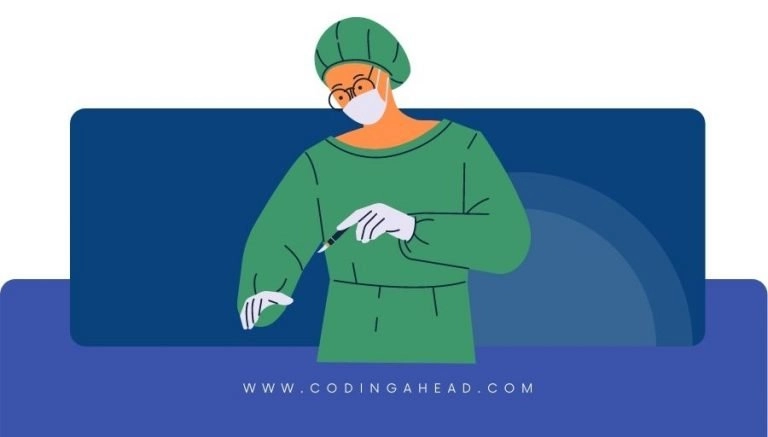How To Use CPT Code 61107
CPT 61107 describes the procedure of creating twist drill holes in the skull to access the subdural, intracerebral, or ventricular areas for various purposes. This article will cover the official description, procedure details, qualifying circumstances, appropriate usage, documentation requirements, billing guidelines, historical information and billing examples.
1. What is CPT Code 61107?
CPT 61107 is used to describe the procedure in which a healthcare provider uses a hand-operated twist drill to create one or more holes in the skull. These holes are made to access the subdural, intracerebral, or ventricular areas for different purposes, such as implanting a ventricular catheter, pressure recording device, or other intracerebral monitoring device.
2. Official Description
The official description of CPT code 61107 is: ‘Twist drill hole(s) for subdural, intracerebral, or ventricular puncture; for implanting ventricular catheter, pressure recording device, or other intracerebral monitoring device.’
3. Procedure
- The healthcare provider prepares the patient for the procedure, ensuring appropriate anesthesia and prepping the area.
- A small incision is made in the scalp, and the provider gently moves the scalp away to expose the skull.
- Using a hand-operated twist drill, the provider creates one or more holes in the skull, carefully perforating it to access the desired area.
- The holes can be used to aspirate cerebrospinal fluid (CSF), insert a ventricular catheter for pressure monitoring and drainage, or implant a recording device to measure intracranial pressure.
- The provider completes the procedure by closing the incision and ensuring proper wound care.
4. Qualifying circumstances
CPT 61107 is performed when there is a need to access the subdural, intracerebral, or ventricular areas for various purposes. The procedure is typically done to implant a ventricular catheter, pressure recording device, or other intracerebral monitoring device. It is important to note that for intracranial neuroendoscopic ventricular catheter placement, a different code, 62160, should be used.
5. When to use CPT code 61107
CPT code 61107 should be used when a healthcare provider performs the twist drill procedure to create holes in the skull for subdural, intracerebral, or ventricular puncture. It is important to ensure that the procedure is performed for the specific purposes mentioned in the official description.
6. Documentation requirements
To support a claim for CPT 61107, the healthcare provider must document the following information:
- Reason for the procedure and the specific purpose of accessing the subdural, intracerebral, or ventricular areas
- Details of the twist drill procedure, including the number of holes created
- Any additional procedures performed, such as aspiration of cerebrospinal fluid or implantation of monitoring devices
- Date and time of the procedure
- Any complications or adverse events that occurred
- Signature of the healthcare provider performing the procedure
7. Billing guidelines
When billing for CPT 61107, it is important to ensure that the procedure meets the specific criteria outlined in the official description. The twist drill procedure should be performed for subdural, intracerebral, or ventricular puncture, and the purpose should be to implant a ventricular catheter, pressure recording device, or other intracerebral monitoring device. It is also important to follow any additional guidelines provided by the payer or coding guidelines.
8. Historical information
CPT 61107 was added to the Current Procedural Terminology system on January 1, 1990. There have been no updates or changes to the code since its addition. However, it is worth noting that it was added to the Inpatient Only (IPO) list for Medicare in 2017.
9. Examples
- A neurosurgeon performing a twist drill procedure to create a hole in the skull for the implantation of a ventricular catheter to monitor intracranial pressure.
- A neurologist using a twist drill to create multiple holes in the skull for the placement of intracerebral monitoring devices to measure brain activity.
- A trauma surgeon performing a twist drill procedure to access the subdural space and drain excess fluid in a patient with a subdural hematoma.
- A neurosurgeon using a twist drill to create a hole in the skull for the insertion of a pressure recording device to monitor intracranial pressure in a patient with hydrocephalus.
- A neurologist performing a twist drill procedure to create a hole in the skull for the implantation of a neurostimulator electrode in the cortical area for the treatment of epilepsy.
- A neurosurgeon using a twist drill to create a hole in the skull for the insertion of a ventricular catheter to drain excess cerebrospinal fluid in a patient with normal pressure hydrocephalus.
- A neurologist performing a twist drill procedure to create multiple holes in the skull for the placement of intracerebral monitoring devices to assess brain function in a patient with traumatic brain injury.
- A neurosurgeon using a twist drill to create a hole in the skull for the implantation of a pressure recording device to monitor intracranial pressure in a patient with a brain tumor.
- A trauma surgeon performing a twist drill procedure to access the ventricular space and drain excess cerebrospinal fluid in a patient with obstructive hydrocephalus.



